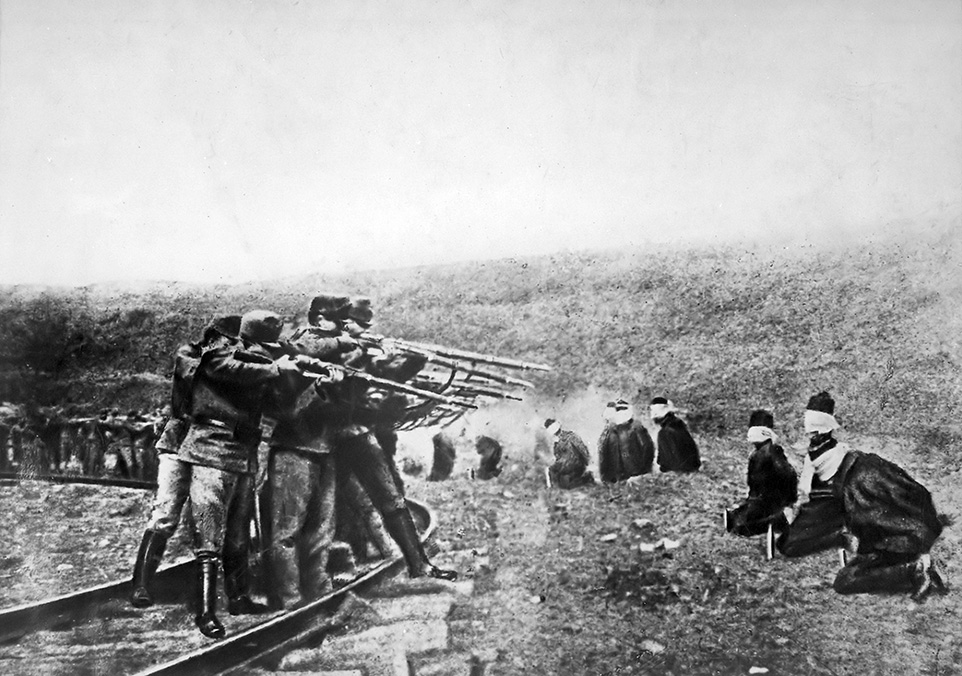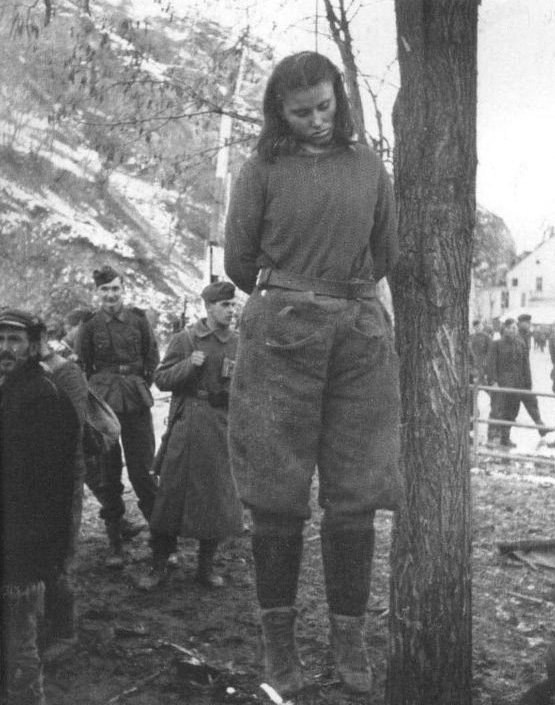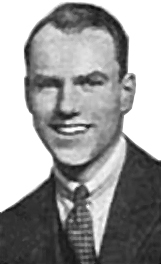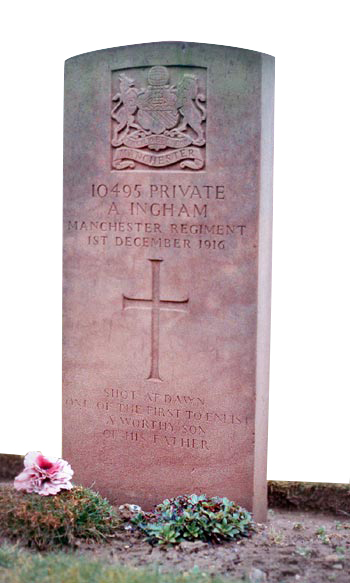Executions

Serbian prisoners of war are arranged in a semi-circle and executed by an Austrian firing squad, 1917
During the Great War many soldiers were executed. The armies wanted to set examples to the troops. Do not walk away from our war - we shoot you if you do. The men were shot for desertion, mutiny, cowardice (even if it was caused by shell shock or other mental affections), and other breaches of discipline.

Lepa Radic, Serb Partizan
For the duration of the war, executions were kept silent. Robert Graves:
“I had my first direct experience of official lying when I arrived at Le Havre in May 1915 and read the back-files of army orders at the rest camp. They contained something like twenty reports of men shot for cowardice or desertion. Yet a few days later the responsible minister in the House of Commons, answering a question from a pacifist, denied that sentence of death for a military offence had been carried out in France on any member of His Majesty's Forces”
(in Goodbye to all That, 1929).
After the war all armies made their files on the executions top secret. Of course there were rumours and in a few cases the truth leaked through. Only these last years some of the archives have been opened and now, slowly, thanks to the efforts of independent researchers and journalists, the stories become public.
As a result of this political debates have been started in several countries. about reviewing the sentences. New-Zealand has already pardoned (through Act of Parliament) the soldiers it executed in WW1. The Canadian government has offered an apology and formally announced its regret for what happened. England announced in August 2006 that it will formally pardon (on moral grounds) all soldiers who were shot by firing squads.
Numbers
In total British court martials had 306 soldiers shot at dawn. Among them were 25 Canadians, 22 Irishmen and 5 New-Zealanders.
Australia was the only country that did not want its soldiers (all volunteers) to be executed. The 129 Australians (including 119 deserters) that were sentenced to death during the war (117 in France) were not shot.
Between April 1917 and November 1918 American court-martials sentenced 24 American deserters to death. None was actually shot. Stragglers and deserters were often publicly humiliated.
From the German army about 150,000 soldiers deserted. Most of them fled to the neutral Netherlands and to Denmark and Switzerland. From those who got caught no more than 18 were executed (compare this to the 10,000 deserters Germany shot in the second world war).
In the French army more than 600 soldiers were put to death. Little known is the French decimation (the shooting of every tenth person in a unit) of the 10e Compagnie of 8 Battalion of the Régiment Mixte de Tirailleurs Algériens. During the retreat at the beginning of the war these French-African soldiers refused an order to attack. They were shot on the 15th of December 1914 near Zillebeeke in Flanders.
Victor Silvester

Victor Silvester
Victor Silvester (1900-1978), a world famous dance orchestra leader after the war, was a boy soldier and participated in the execution of five soldiers.
In an interview he gave just before his death Victor Silvester told how he was ordered to execute a man:
"The victim was brought out from a shed and led struggling to a chair to which he was then bound and a white handkerchief placed over his heart as our target area. He was said to have fled in the face of the enemy.
The tears were rolling down my cheeks as he tried to free himself from the ropes. I aimed blindly and when the gunsmoke had cleared away we were further horrified to see that, although wounded, the man was still alive. Still blindfolded, he was attempting to make a run for it still strapped to the chair. An officer in charge stepped forward to put the finishing touch with a revolver held to the poor man's temple.
He had only once cried out and that was when he shouted the one word 'mother'. He could not have been much older than me. We were told later that he had in fact been suffering from shell-shock, a condition not recognised by the army at the time. Later I took part in four more such executions."
Bailleulmont Cemetery

The small cemetery of Bailleulmont lies in the hills, just outside this village in Northern France. There is a corner for 31 British soldiers who died in the Great War.
The register of the cemetery mentions that all soldiers here “died of wounds”. For three of men buried here this is a effrontery: they died standing before an execution squad.
The picture shows the grave of Albert Ingham, who was shot at sunrise on December 1st, 1916. He is buried next to his bosom friend Alfred Longshaw. Before the war both worked with the railways, they enlisted together, they fought together and when they were sent back to the Somme front they deserted together. They were also executed together.
Long after the war Albert Ingham's father learned about the death of his son. He demanded this inscription on the gravestone:
SHOT AT DAWN
ONE OF THE FIRST TO ENLIST
A WORTHY SON
OF HIS FATHER